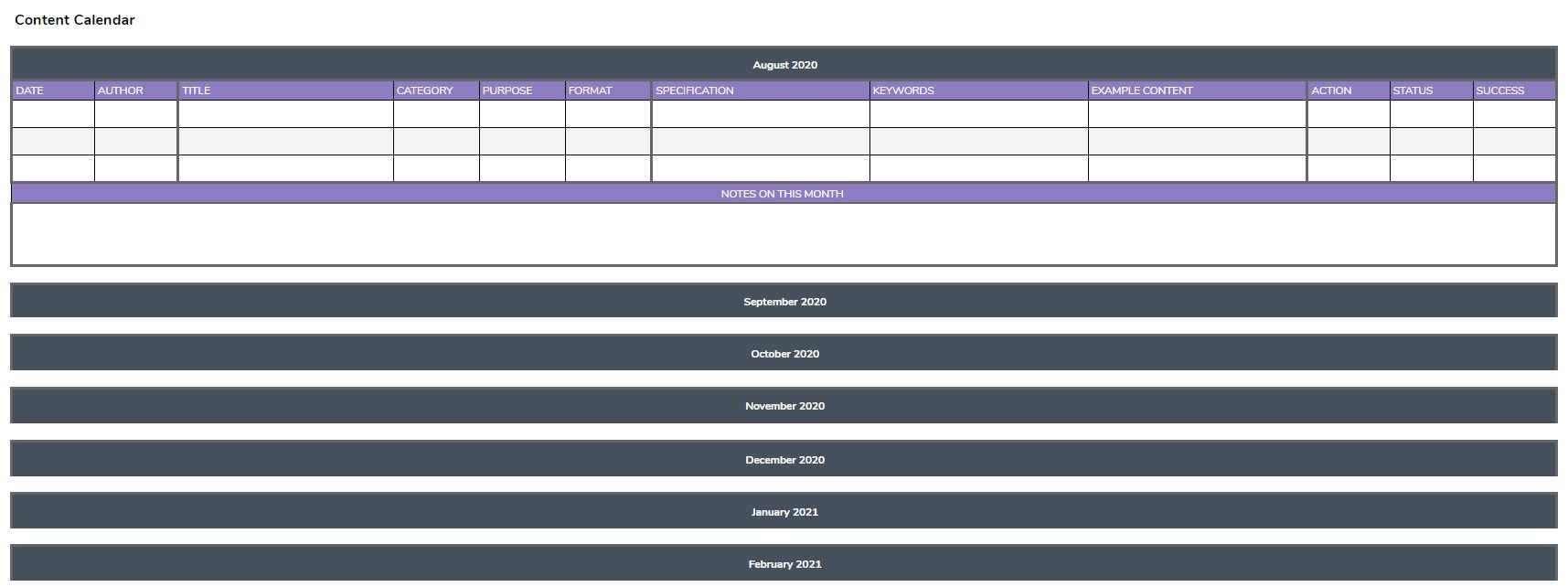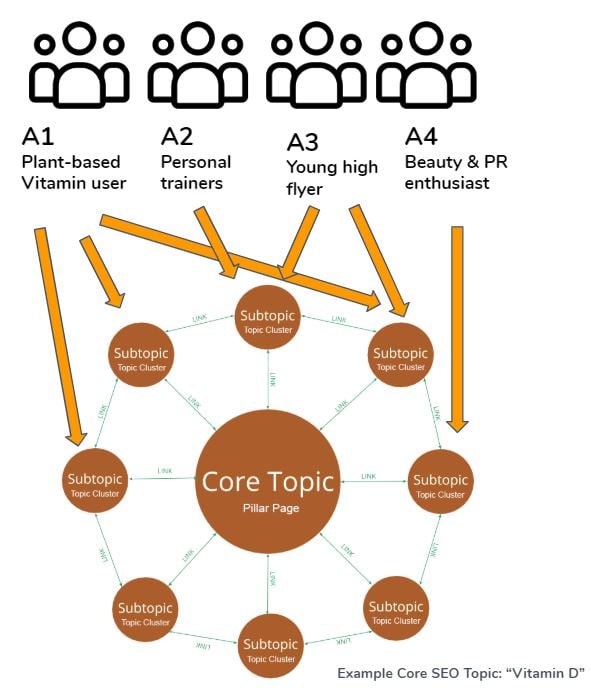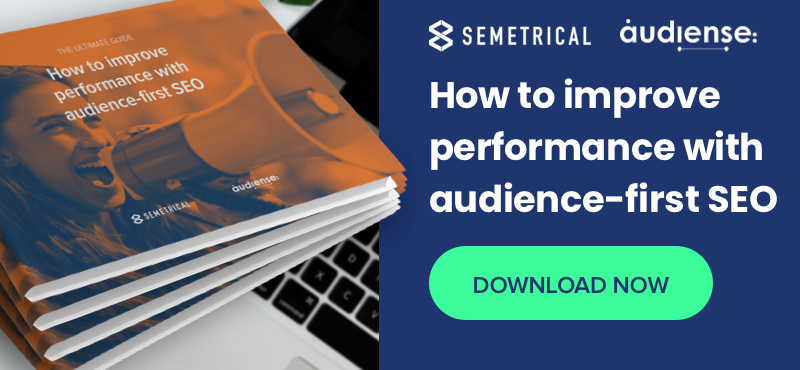How to make an audience-centric digital marketing strategy
This is the second article in a series of guides that will focus on how you can integrate your keyword intelligence and audience intelligence. You can read the previous one here.
To excel at digital marketing, you need to focus on an audience-centric digital strategy that works to align all of your channels but tailor your brand messaging in line with multi-audience segmentation - this will result in improved SEO, paid media, content, digital PR, social media & email campaign metrics with efficiencies throughout.
There is often a serious lack of alignment between internal teams that tend to focus on their achieving channel specific objectives instead of the wider strategic objectives. By developing an audience-centric strategy, you can coordinate your teams to focus on connecting with priority audience segments to drive profitable action.
How do I coordinate an audience-centric digital marketing strategy?
The insights gathered from your keyword intelligence and audience intelligence research should be organised into a manageable action plan for achieving:
- Digital marketing strategic governance
- Team coordination and SMART goal alignment
- Cross-channel marketing campaign optimisation.
This process involves fully integrating the insights gathered from your keyword intelligence and audience intelligence.
Define scope of strategy and set measurable objectives with KPIs
When outlining your audience-centric digital strategy, you should firstly outline your objectives and then consider how to set SMART (specific, measurable, actionable, realistic and time orientated) KPI goals per channel.
The SMART goals per channel should be validated against the wider objectives of your strategy.
A macro digital strategy planner should work to coordinate the efforts of all of your digital marketing channels, aligning channel-specific strategies or campaigns to your brand’s target audience segments.
PRO TIP - Use a macro digital strategy planner to coordinate your marketing teams by establishing a flow of actionable insights per audience segment for cross-channel campaign optimisation.
You can coordinate the efforts of all your teams by focusing on creating engaging full funnel cross-channel experiences for each audience segment, driven by a stream of highly relevant insights that are both evergreen and real-time from multiple integrated data sources.
Establish your macro digital strategy planner based on keyword targeting plan, SEO topical modelling, audience pain points and relevant interest topics
We recommend you include the following in your macro digital strategy planner:
Macro strategy planner calendar
Macro strategy planner calendar which coordinates various specialist teams by detailing the objectives and SMART goals of your digital channels month to month segmented based on your audience segmentation.
Multi-segment audience (buyer persona) matrix
Multi-segment audience (buyer personas) matrix that categorises:
- Relevant content assets
- Social media campaigns & example posts (including links to social tools used for scheduling etc.)
- Digital PR campaigns
- Paid media campaigns
- Relevant SEO topics
- Core messaging specific to your various audience segments.
These audience segments are defined as part of integrating audience intelligence and keyword intelligence research, allowing you to identify and cluster common pain points, interests, behaviours, search patterns and SEO topical clusters as well as conversation topics.
%20matrix%20example%20for%20UK%20vitamin%C2%A0%26%20supplements%20industry.jpg?width=1213&name=Multi-segment%20audience%C2%A0(buyer%20persona)%20matrix%20example%20for%20UK%20vitamin%C2%A0%26%20supplements%20industry.jpg)
Content calendar
Content calendar with details on the content assets, their target audience(s) and how those assets will be promoted via social media, digital PR and paid media channels.
This dashboard should primarily function as your day-to-day action plan and editorial publishing schedule for getting content assets live that have been produced to help achieve the objectives and SMART goals of your audience-centric digital strategy.

SEO keyword targeting planner
The SEO keyword targeting planner lists your brand’s target keywords, their user intent, relevant web page URL, auxiliary keywords, target audience(s), SEO topical pillar, supporting content funnel and page optimisation recommendations.
This dashboard operates mainly as an evergreen SEO content planner informed by the keyword intelligence research. It should be used as a reference point for content, digital PR, PPC and social media teams to understand your brand’s priority keywords and how they are performing (rankings, traffic & conversions).
Ultimately, this is the way in which your brand’s core audience segment searches for your products, services or thought leadership topics over a longer period of time, and therefore is evergreen, established and known.
This is therefore different from audience intelligence data derived from on-going social listening, whereby new conversation topics, interests and opportunities are gathered in close to real-time.
PRO TIP - Upload keyword data from your keyword intelligence into an audience intelligence platform that can undertake social listening as part of your data enrichment strategy.
- Upload the keywords tagged as a specific keyword segment (e.g. topic) from your keyword intelligence research into an audience intelligence platform using social listening
- You can then set up a stream of social audience insights around conversation, interests and behaviours aligned with the identified long-term evergreen SEO topics
- This enables strategic alignment through data enrichment cross-channel between social media data, audience intelligence platforms and Google’s search data.
SEO topical modelling matrix
SEO topical modelling matrix which lists the SEO topics that are relevant to your products, services and areas of authority. This matrix will reference the supporting SEO content articles that should internally link back to your SEO pillar page.

Digital PR calendar
The digital PR calendar is an overview of month to month digital PR campaigns, their objectives, relevant audiences, SEO keywords and prospect lists. This digital PR calendar should align with the content calendar and be informed by the keyword targeting planner to drive SEO results. Each campaign should reference it’s relevant audience segments, to ensure alignment with overall audience-centric strategy.
Social media calendar
The social media calendar is an overview of week to week social media activity, their objectives, relevant audiences and visual assets. The social media calendar should align with the content calendar and digital PR calendar.
Paid media campaign calendar
Paid media campaign calendar that details all of the paid activity across various channels with objectives, budgets and target audience information.
Key takeaway
You can use this approach to coordinate your teams in line with the data available for working towards personalisation of your multi-segment audience digital strategy.
This will enable you to adopt an audience-centric approach, but you need to use the right technology, research methodology for integrating data sources, and achieve strategic governance through cross-channel coordination by using a manageable macro digital strategy planner.
From here you can begin to optimise your campaigns towards an audience-centric digital strategy.








